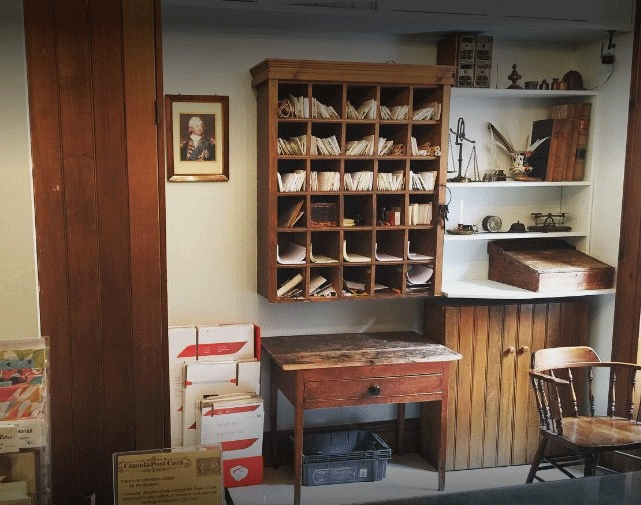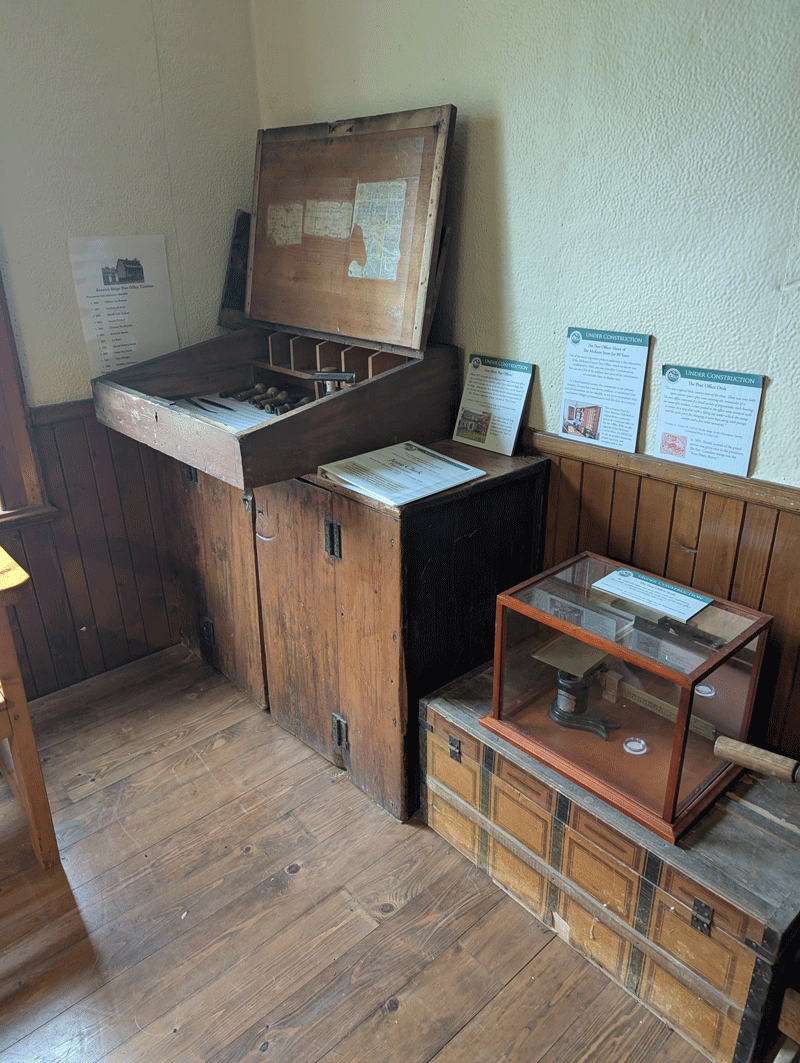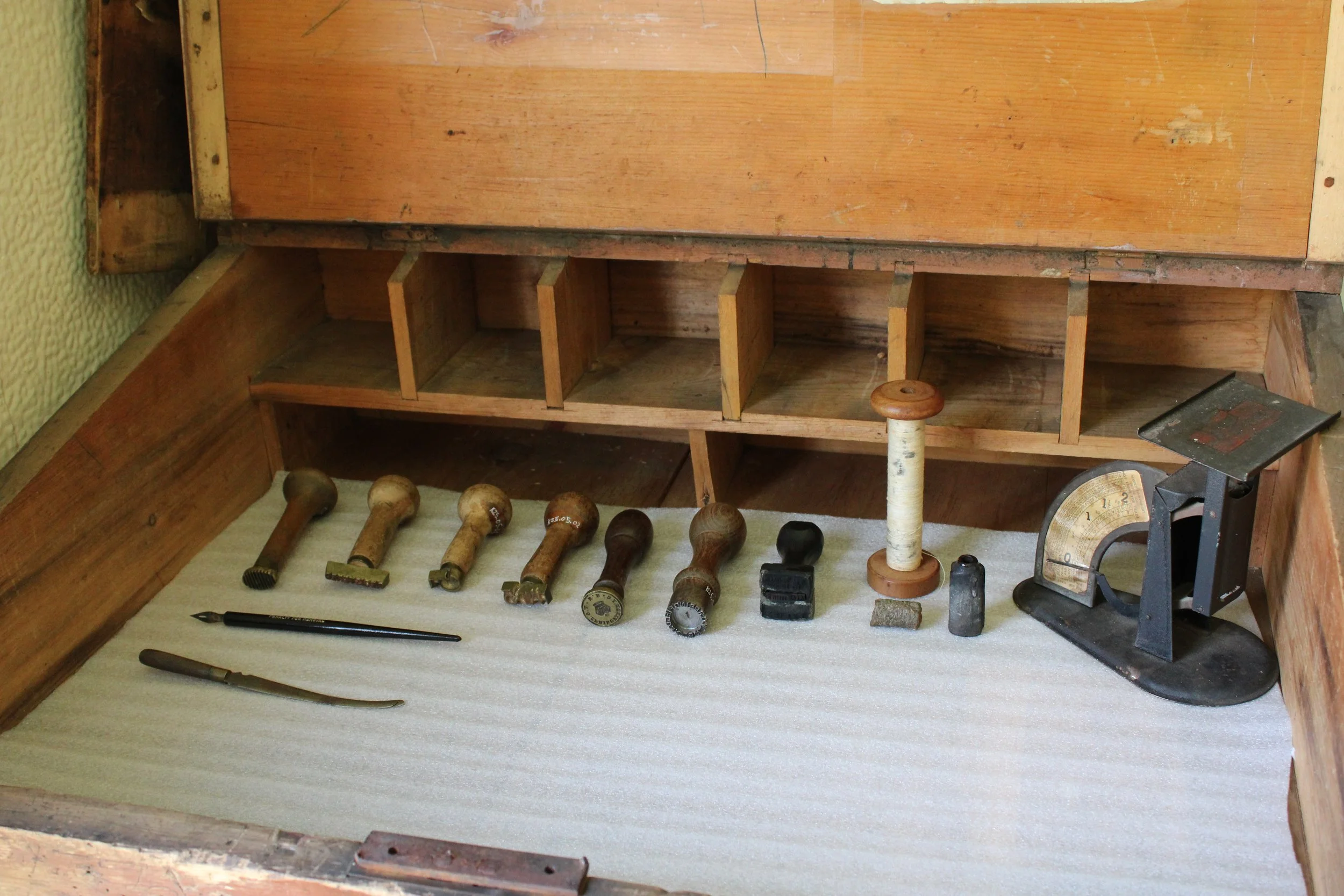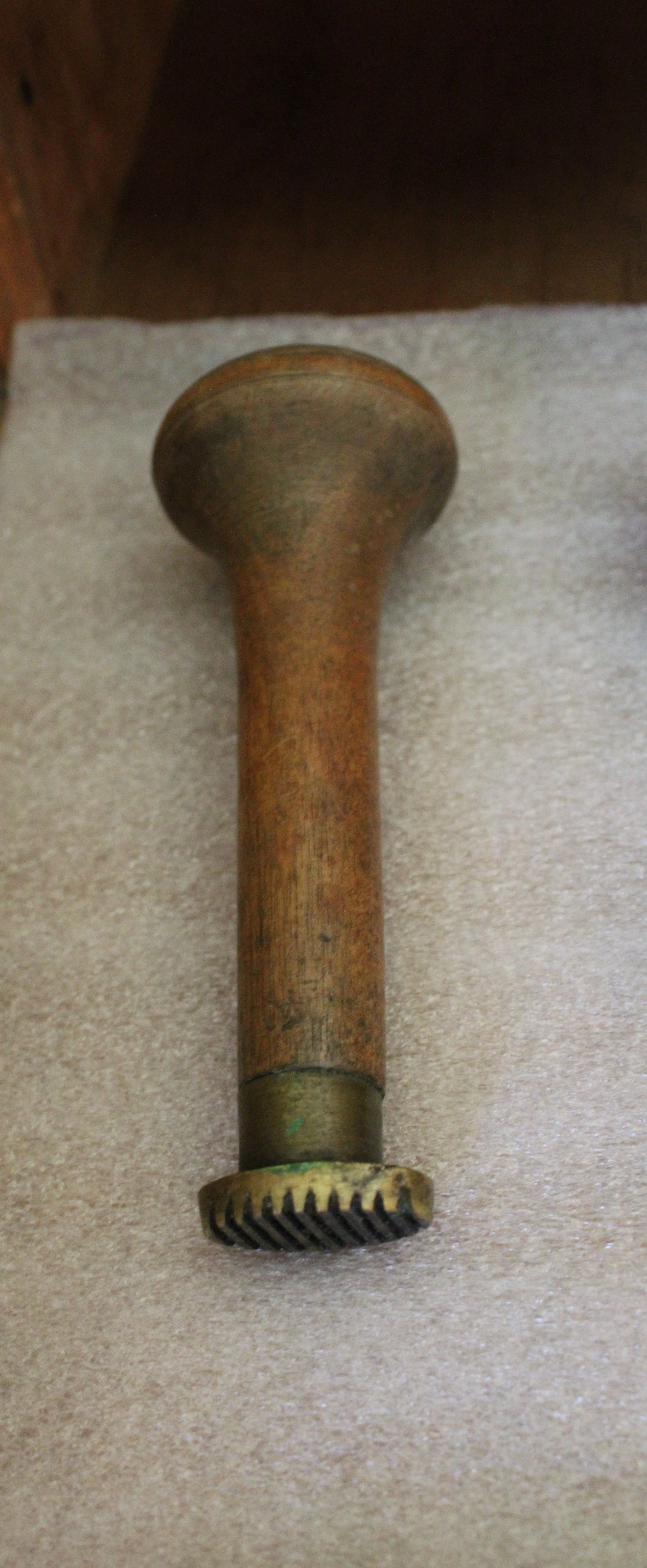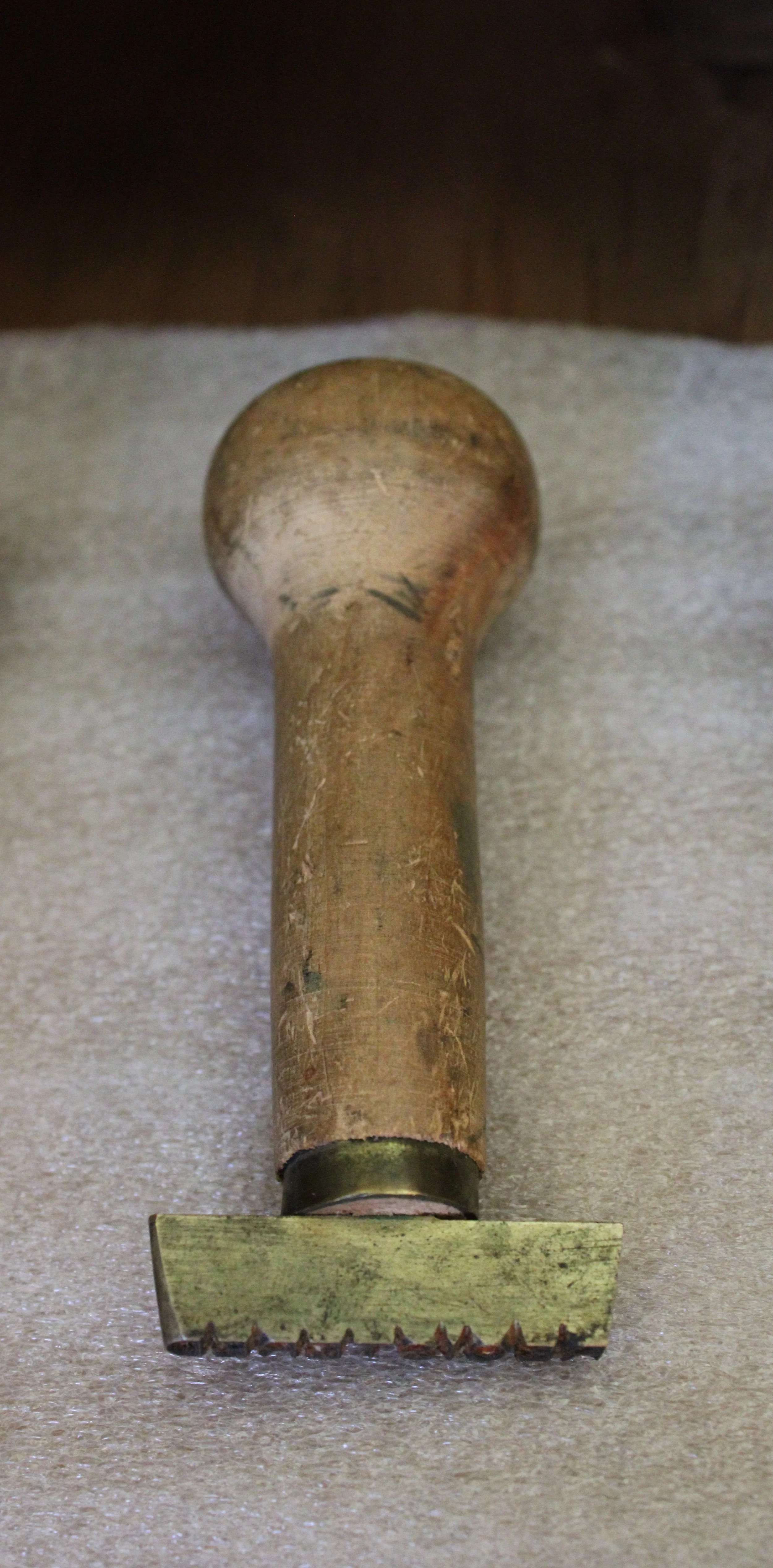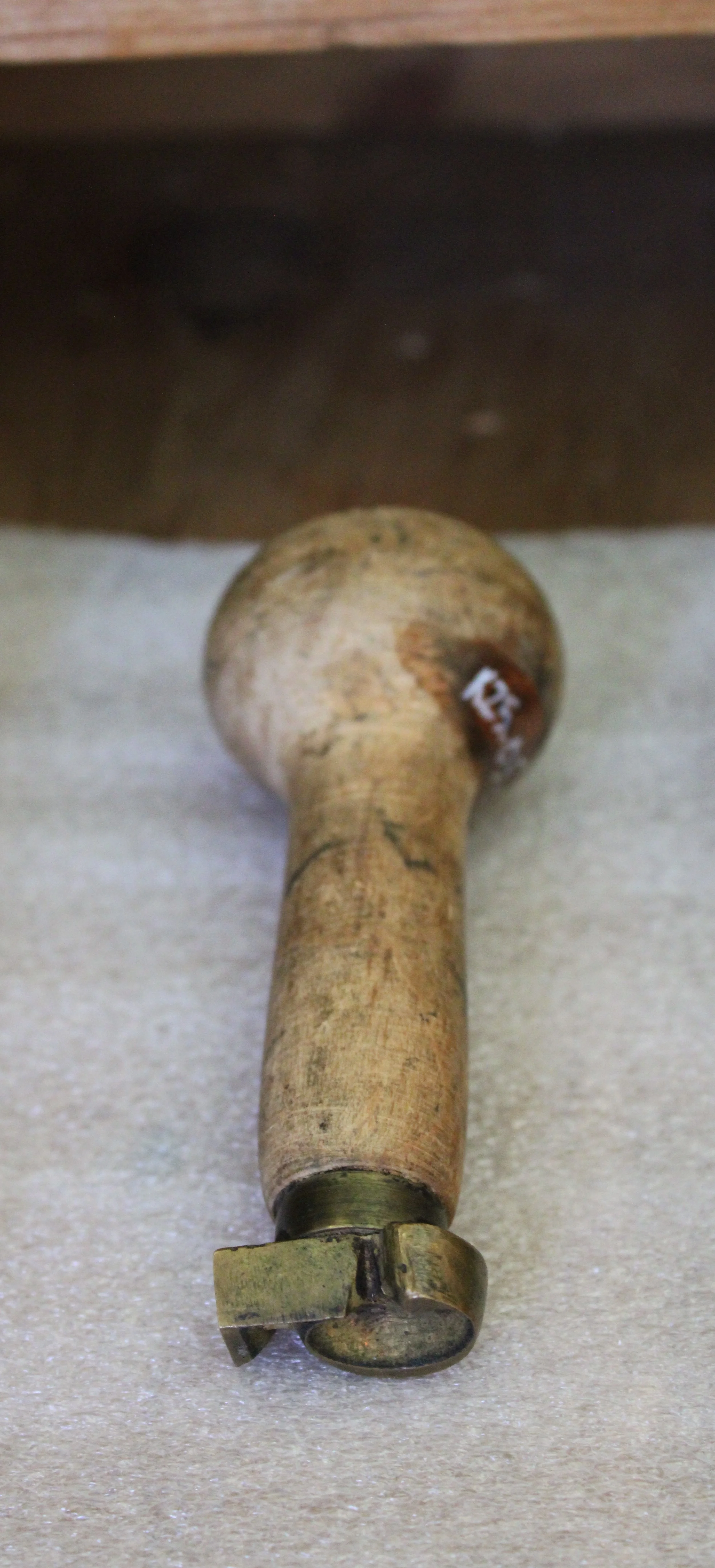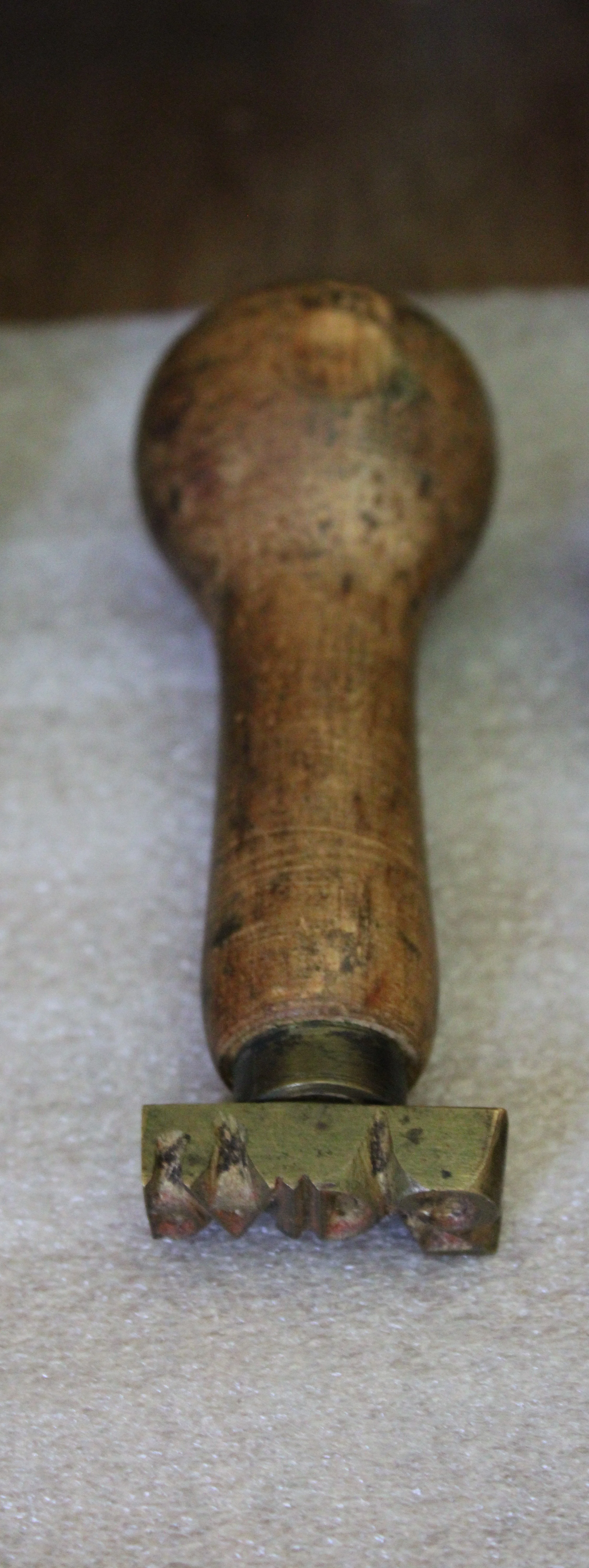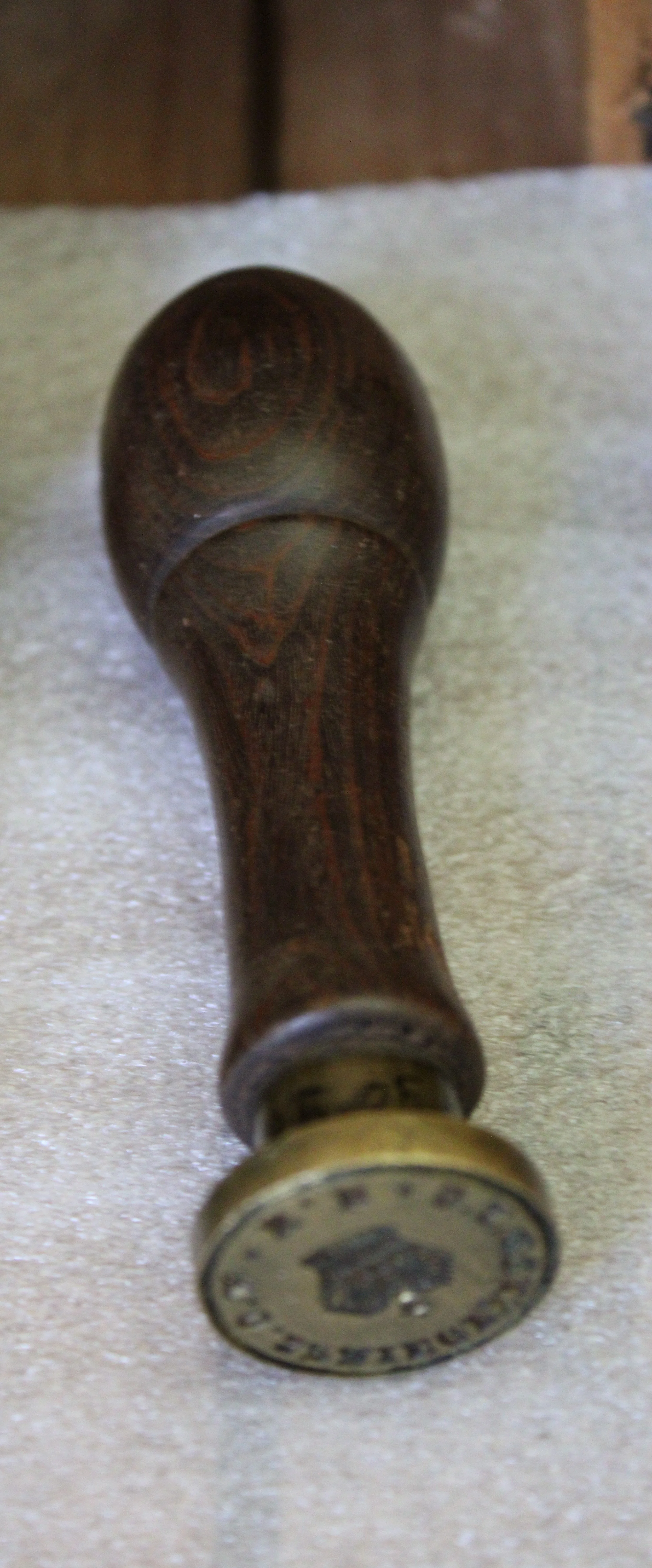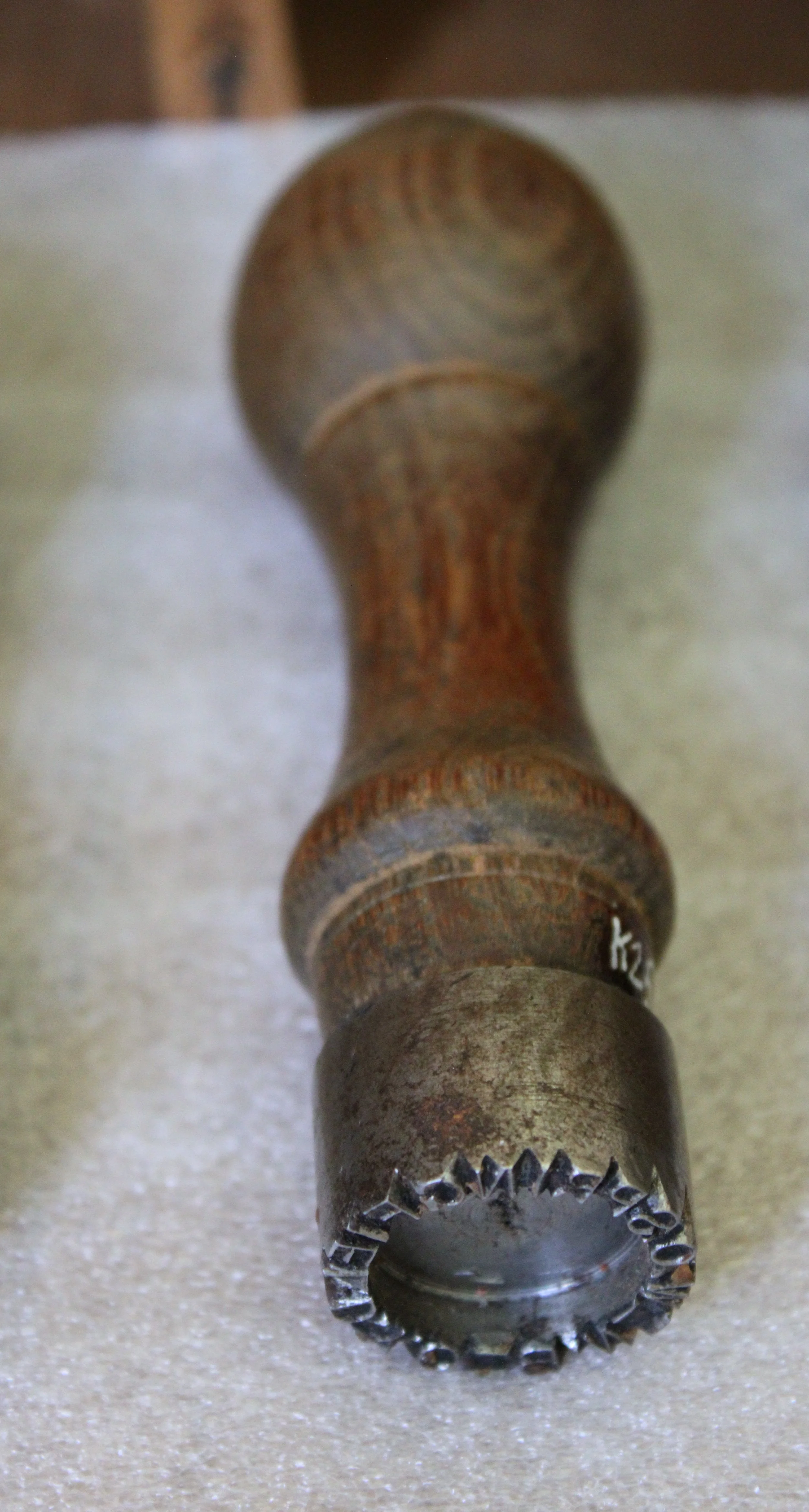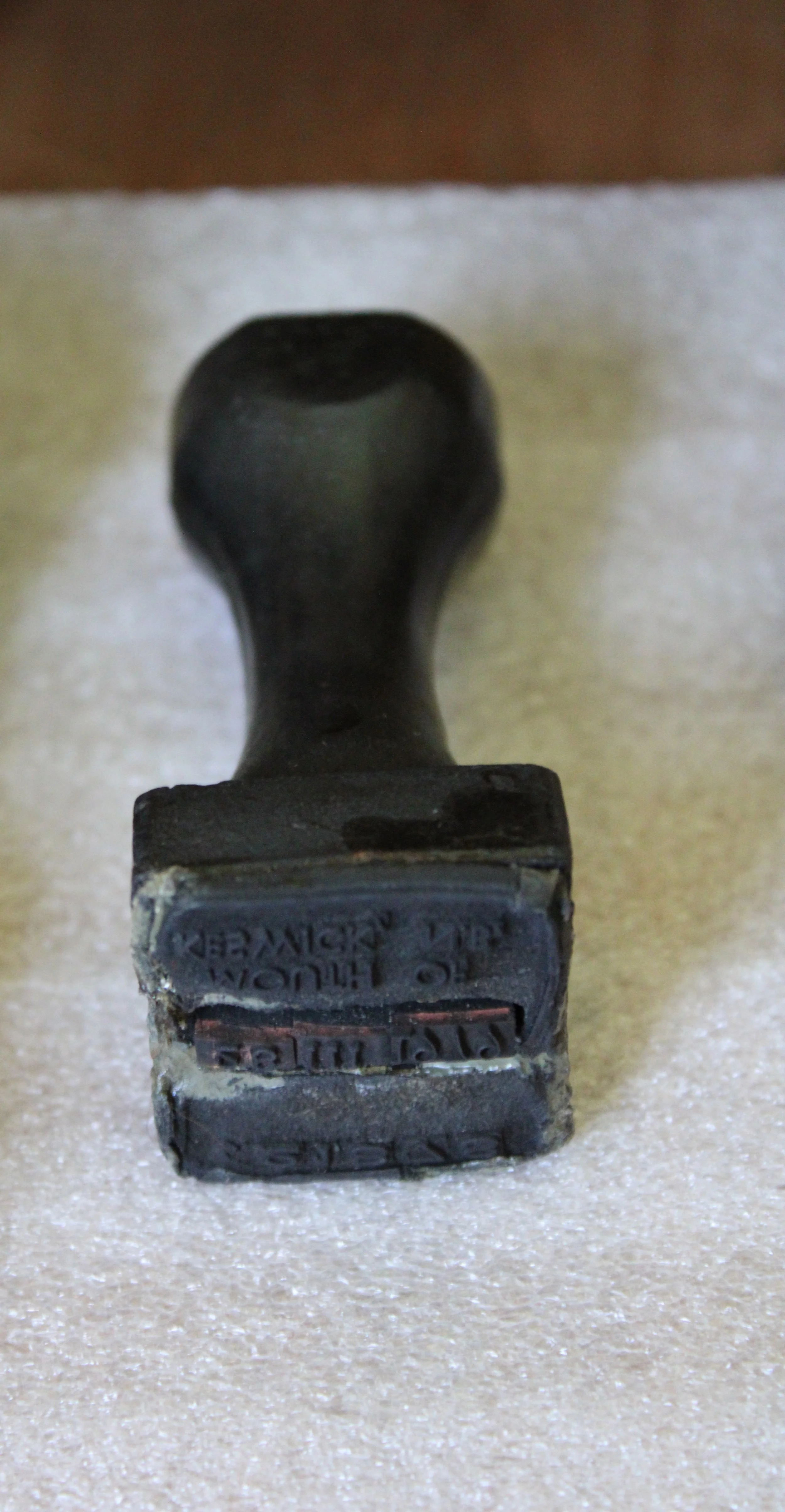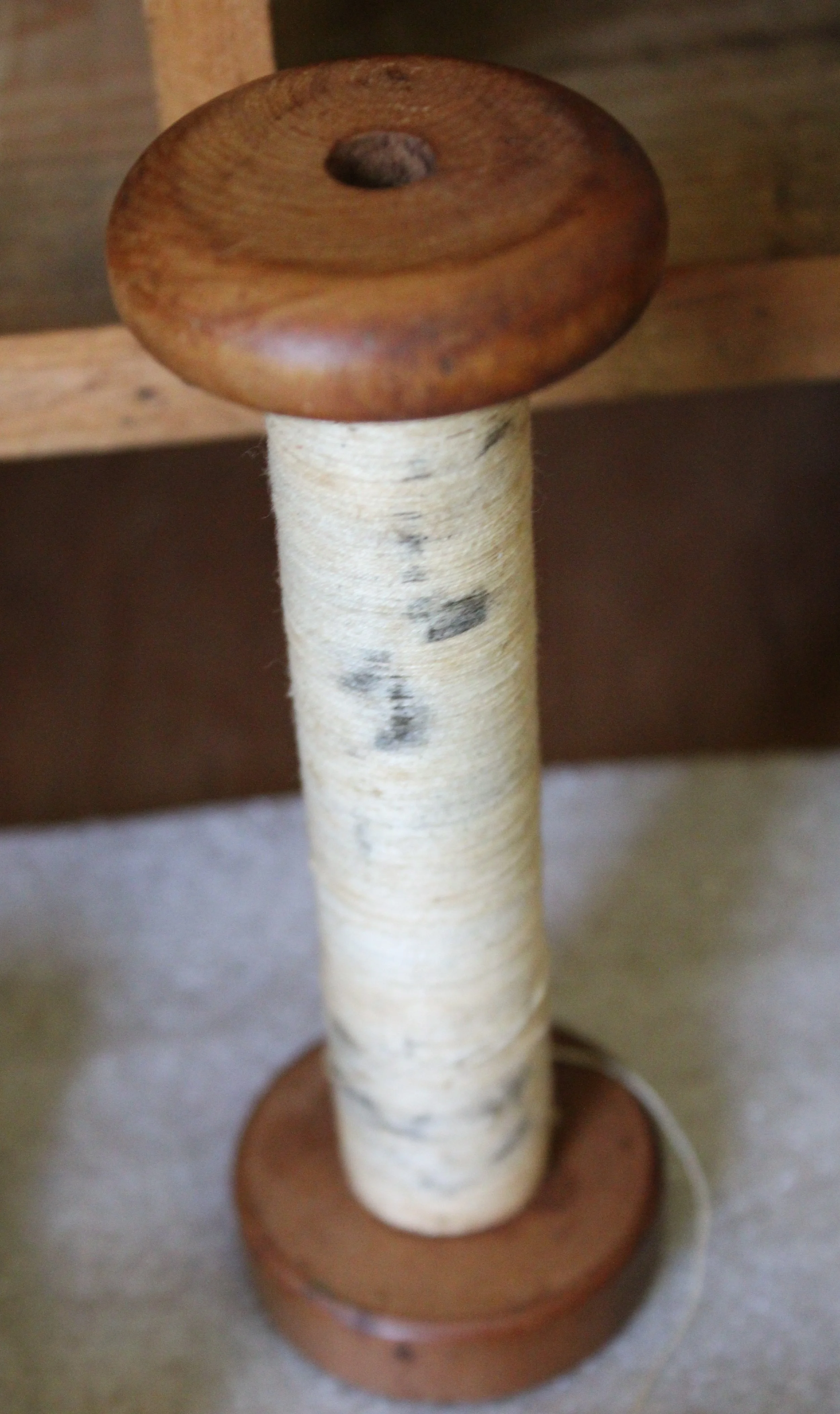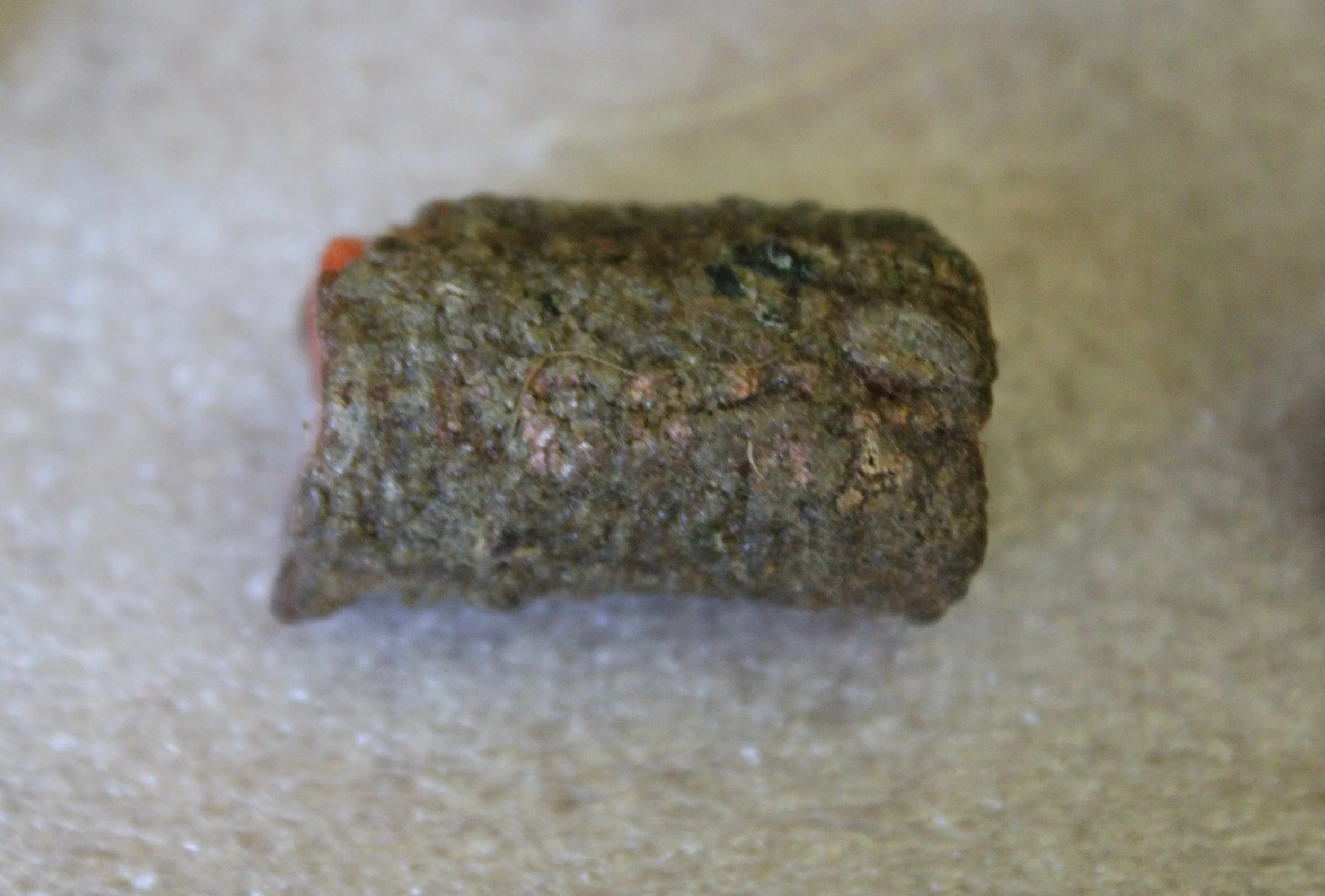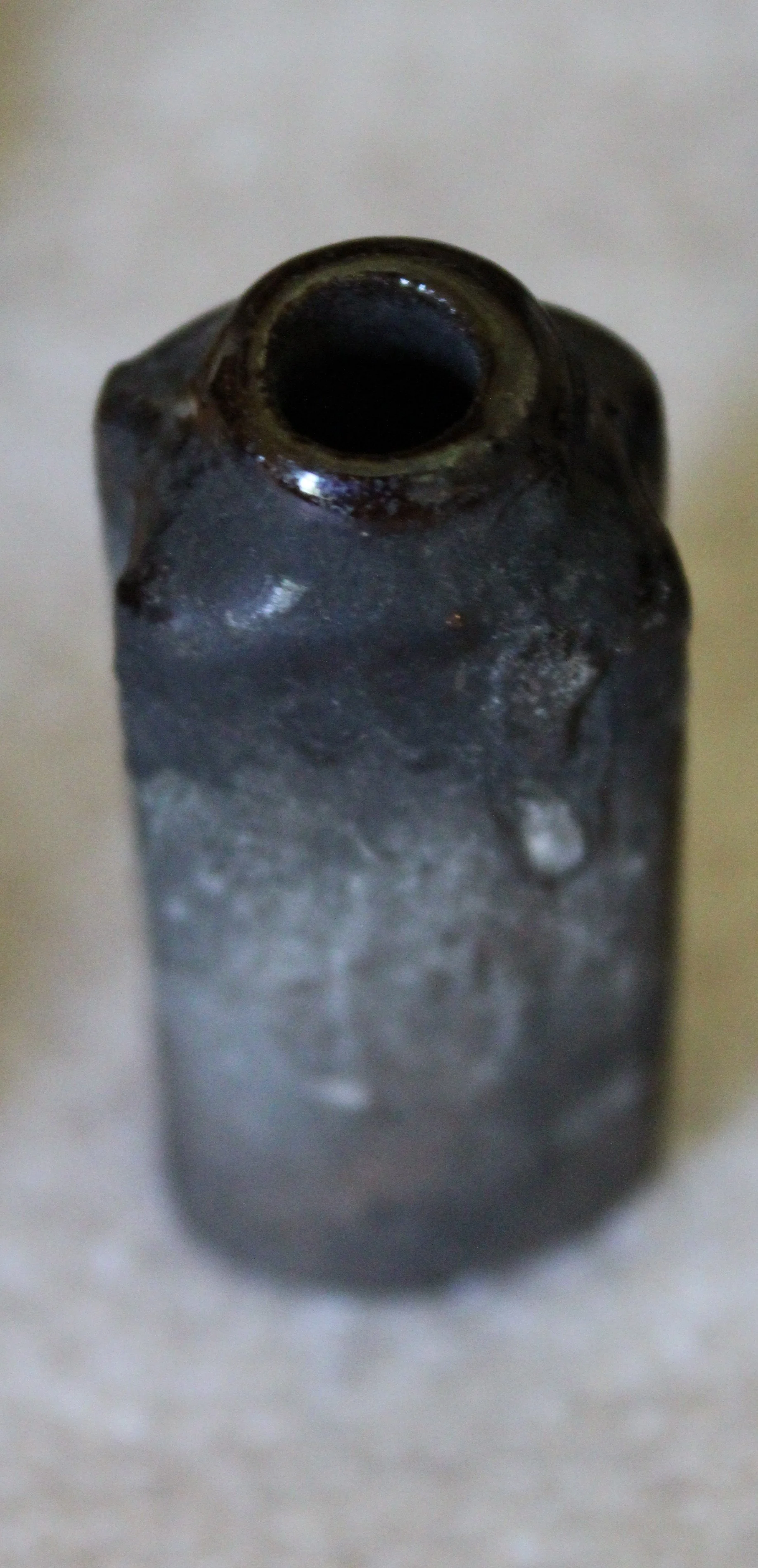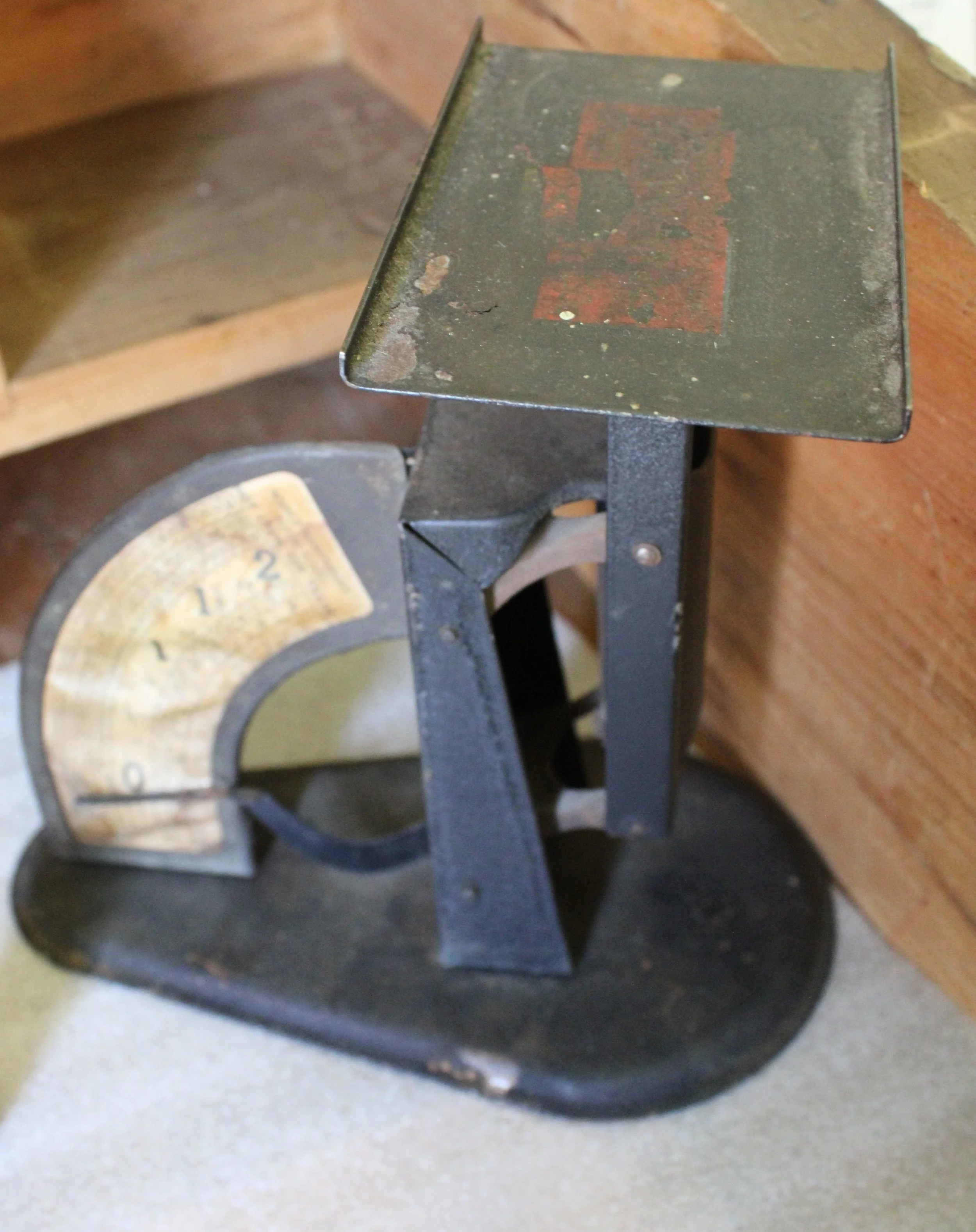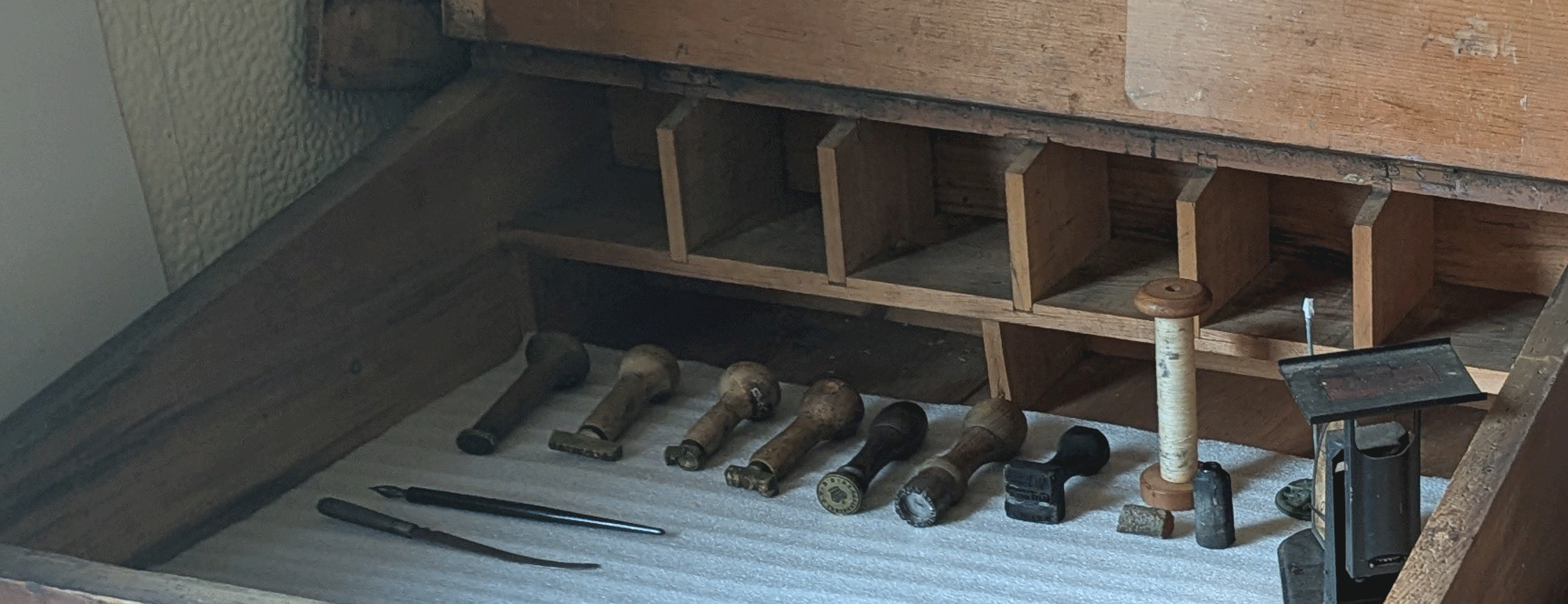
Stamped In Time
The McKeen Store Post Office Reconstruction Project
In 19th-century rural New Brunswick, postal service was provided through officially recognized Post Offices and a more extensive network of informal "Way Offices," which were essentially roadside stops for collecting and forwarding mail. These smaller, often locally run offices were crucial for serving growing settlements in areas with limited infrastructure. While formal post offices were fewer in number, way offices significantly expanded the reach of the postal system, and there were hundreds of them in New Brunswick, with some records showing 742 Post Offices and Way Offices in 1880. The McKeen store initially operated as a Way Office (from 1868) but was “upgraded” to a Post Office on the 1st of September, 1875. It remained there until February 15, 1949, having survived and served the vital communication needs of two world wars, and been a fundamental part of the growth and stability of the community.
There are remarkably few verifiable artifacts from the post office’s seventy four years, but plenty of anecdotal evidence, including stories, letters and postcards. But through outreach, research, donations, and some creative browsing through antique stores and estate sales, the society has collected a considerable number of artifacts that directly relate to the rural postal system in this part of New Brunswick during the era of the McKeen Store. One of our most recent, and valuable acquisitions, “Jesse Clark’s Treasure Chest”, has given us pristine examples of period equipment (see photos and descriptions below) from a similar post office only a few miles away in Springfield.
Phase Three in our development of the store museum is the replication and reconstruction of the post office, and we are currently in the process of grant application for funding, research into design and materials, and sourcing authentic fabrication of a counter, and the signature “pigeonholes” based on designs of the time. Have some information you think might help us? Interested in getting involved in this important project? Don’t hesitate to contact us.
A reproduction of a post office from rural Ontario, c. 1880, containing many of the elements that would have been in the McKeen store during the same period.
The area in the store where the post office was originally located, currently housing an acquired desk, a set of scales, as well as stamps and seals from "Jesse Clark's Treasure Chest."
Postal goods, with most having belonged to Jesse Clark, Postmaster of the Springfield post office from October 1, 1868, to February 2, 1885.
This is a part of a duplex cancelation postmark. These were placed over stamps to ensure they were not reused. The 11 lines were accompanied with the mark of the canceling office and date to complete the duplex cancel. Duplex cancelations were typical from the 1860s to the late 1800s.
Registration of letters was available for an extra fee, typically 10 cents for domestic postage. Letter registration was typical for mail which was traveling further, meaning it was mostly used for mail going outside the province. The registration stamp was most likely introduced to the Springfield postal service after it was converted to a full post office.
Five cents was the standard price for letter mail with domestic, North American, and British destination.This postmark was used to indicate that postage was not paid at point of departure. This means that the recipient would pay the fee for postage. This was called ‘unpaid’ mail and was provided at a rate of 5 cents per half ounce. This rate remained from 1868-1875, after which unpaid mail service was abolished.
This postmark was used indicate that a sender had paid the price of sending mail during the period in which unpaid mail was allowed. This postmark then fell out of use after 1875, and the regular '5' was used to reflect the payment of mailing services on goods.
This seal would likely have been used on official documents coming and going from the Springfield post office.
This hammer is the postmark of the Springfield post office after 1875. In addition to serving as the primary mark of the post office, it also served as the second part of the duplex canceling system for the post office.
This is a rubber postal hammer from the Mouth of Keswick post office dated for March 28th, 1979. Rubber postmarks became popular after World War II. This object was generously donnated by Kevin McKeen.
This thread was likely used to tie up letter bundles in the Springfield post office.
This is a piece of wax which was likely used to make wax seals to close important documents in the Springfield post office.
This vial likely held ink, or a component of ink, which could them be mixed. There would then be a small firm brush that could be used to brush ink on postal hammers to mark mail. The brushing method was common before the invention of the ink pad in the late 19th century.
This postal scale is from 1951. The lever on the base would rise as the scale lowered and would indicate the price senders would need to pay for shipping a piece of mail. This object comes from Dan Nicholson, and is not originally from the Keswick or Springfield post offices.
This is a letter opener belonging to Jesse Clark. As standardized postage became normal, more mail was sent, including to postmasters. This increased the presence of this instrument. Letter openers made mail easier to open and less likely to rip.
This is a Canada Post dip pen. It is unclear when these were in mandated use. This item was donated by Kevin McKeen.
